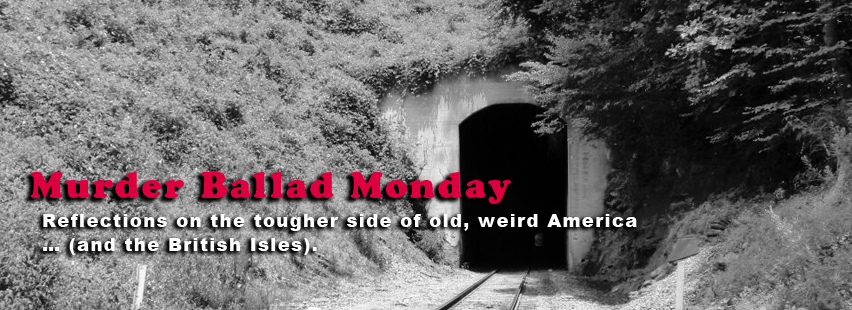I’ll be true unto my love…
When I was linking the lyrics for Clannad’s version of “Two Sisters” for this week’s main post, I was stumped when I saw the refrain on several sites listed as “the boys are born for me”. I’d always heard it as “the boys are bound for me”. So I asked my wife. She said that clearly it’s either “the boy’s a-bound for me” or maybe “the boys abound for me”. Ok then, well; she wasn’t buying “born” at least. I thought about trying to rope my son into it; but he wants nothing to do with figuring out anything about boys and girls being “kissy kissy”, as he calls it. Child’s cataloged versions don’t come close in their refrains, so they don’t help.
Anyway, I listened to it over and over, and I convinced myself it was ‘born’. But, honestly, I still can’t really tell.
Now, I don’t mean to be picky. Supply and demand being what it is, all of these interpretations basically come down to it being a pretty good state of affairs for the girl in that one line of the ballad. But I’ll get to that point in my final post, “Bow and Balance to Me.”
For the time being, consider that even in listening to the same well-made professional recording, in English, in the same room, my wife and I heard different lyrics, as did apparently several others who heard the same track and posted on the Internet. Identical source, different ears.
Being a passionate amateur, I have wide experience in listening to, and in comparing and contrasting, numerous versions of hundreds of these songs; but I have no training in formal ballad or folklore study. So to write for this blog, I figured on studying up a bit. In reading up on “‘Omie Wise” after Ken’s excellent piece earlier this month, I came across a book by Eleanor R. Long-Wilgus on that ballad. In it she references a useful framework that she originally outlined in a 1973 article titled “Ballad Singers, Ballad Makers, and Ballad Etiology.”
So what? Well, we’ve all played ‘Telephone.’ So now, let’s play ‘Traditional Ballad.’
Imagine Caravaggio’s scene above comes alive, and we are witness to these four musician-storytellers sharing a ballad, maybe about a womanizing rogue who runs away with a noble’s wife. Long-Wilgus might see them as her four types of traditional singers, all of whom are equally important in the survival of a ballad. (I’ll quote her shorter summary from the book, but you can read the article if you want more.)
Without using too many words like ‘etiology’, let me break it down in a way we might be able to build on in this blog.
1. Perseverators – “who try to faithfully memorize and repeat the song they hear”
(That’s the guy on the right, studying the text. Definitely. But don’t forget my story above and the lessons of the game Telephone…)
2. Confabulators – “who enjoy expanding and embellishing [a ballad] in order to make it more entertaining to their audiences.”
(He’s the next guy over in the back, who’s flashing on some brilliant inspiration – “If I change this line just a bit, it will sound much funnier to the ladies, oh yes.”)
3. Rationalizers – “who intentionally shape the story so that it conforms to their own esthetic or moral values.”
(That’s the serious one on the left, with the bowed head. He’s going to sing it for the Prince’s children, so he’s toning down the explicit “kissy-kissy” stuff and changing the ending so that the rogue does NOT get the girl, and goes to Hell for his scandalous behavior.)
Note that Long-Wilgus says ‘esthetic values’ too, so it’s not just folks who want to impose a moral.
AND
4. Integrators – “who almost wholly [recreate] the song.”
(Obviously that’s the glowing one in the center with the lute. He is clearly possessed by the muse. In another few incarnations, he is born in Minnesota and named Robert Zimmerman.)
Ok, so what does any of this have to do with “Two Sisters”? Well, everything really.
The ballad is ‘wicked old’ as they say up here in New England. I mean, it’s in print in English by 1656. But even if Alan Lomax was too grandiose in his estimate of its origins in pre-Christian Scandinavia, Child’s cross-cultural analysis all but proves that it’s much older than 1656. Let’s be conservative and say it’s six hundred and some years old, three times as old as “‘Omie Wise.”
How many perseverators, confabulators, rationalizers and integrators got hold of the ballad in that time? How many in England? How about Scotland? Norway? North Carolina? We can’t know of course, but there is no doubt that the number is quite high. In a sense, when we sing one of these ballads, we’re singing with all of their voices. When I flash on that while I’m performing, it overwhelms me.
In my final post on this ballad, I’m going to pursue this line as a way to begin to understand the vast differences between “Two Sisters”, “Wind and Rain”, and the ‘original’. To close today though, I’ll post one more version for listening and a quote to tie it all together.
Jean Ritchie wrote in her Folk Songs of the Southern Appalachians in 1965 about her family and the ballad “Two Sisters”, which they called by at least two other names, “Bow Your Bend to Me” and “There Lived and Old Lord.”
“At one time we all sang these old ballads in unison, but since we have scattered abroad and haven’t sung together in several years, we are amused and amazed to find that nowadays we twelve… have twelve distinct sets of words and twelve slightly different melodies to everything!”
“Here is my way.”
Telephone indeed.



